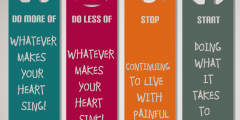
Conflict can be a positive experience if directed in the right way
A research paper entitled has just been published by the UK’s Advisory, Conciliation and Arbitration Service (ACAS).
The thematic review “aims to provide new insights into the challenges faced by organisations in managing conflict.”
There are many great insights in this review, and what becomes clear is the unsatisfactory way conflict at work is currently approached. Informal/formal processes and mediation aren’t very successful and it seems that capacity and capability issues for managers and HR professionals means a lack of attention to an extremely costly issue in the workplace. There are some conclusions about cultivating more trust and developing creativity around solving conflict at work.
In my article, Burying the Hatchet on Workplace Disputes, I identify 8 mind-set shifts to be considered when dealing with unhealthy disputes at work.
There is another side to workplace conflict which should be an integral part of leadership and management development. This is the art of nipping unhealthy conflict in the bud and pivoting to a healthy perspective. There are a number of ways healthy conflict can benefit a business and recognising this, can lead to a more innovative, inclusive and learning mind-set around disputes.
When married couples claim they “have never had a cross word”; the general consensus is they are either completely deluded or the relationship isn’t very deep. (I do believe such relationships exist, I just haven’t actually seen one, but I know you are out there!). Likewise, if all conflict were erased from the workplace, there is a slight feeling of unease because it might all seem a tad sterile. Some conflict is inevitable at work, and some of that can be seen as healthy conflict.
Research on “constructive controversy” or “constructive conflict”, asserts that structured conflict can in fact lead to innovation and creativity. There is also a general consensus that conflict can be meaningful and is necessary in the workplace. As a coach, I have found that there are many ways conflict can be approached which can mean an increase in self-awareness, learning and growth. Some of the ways conflict can be seen as a positive are by
1. Recognising and changing entrenched patterns of creating and resolving disputes
Use conflict to become aware of conflict resolution styles. Becoming aware there are (often unconscious) ways we prefer to deal with conflict can often break the patterns parties involved in the conflict have become entrenched in. Pointing to different styles and becoming aware of different ways of managing conflict in different situations can raise awareness of one’s effectiveness in such situations.
2. Releasing negative energy
Unresolved negative energy at work lying unspoken can thicken the atmosphere, and if it is there long enough, becomes part of the fabric of the workplace. Unresolved negative energy will unknowingly sabotage your efforts. Often a conflict situation is the opportunity to clear negative energy. If it is seen as such, it can definitely be used as a positive progressive change.
3. Using as a catalyst for renewal
Like a volcano erupting, unexpected conflict can cause great damage and unnecessary suffering. There is usually an aftermath and then a time for renewal. While it is important to respect the aftermath of the conflict, it’s also important to understand right at the point of eruption that an intention for renewal must be a focal point.
4.Learning to see and accept the validity of different perspectives
There are many ways conflict occurs, and the most common factor is each person involved may think they are right and the other wrong. It is usually a refusal to see and accept another’s point of view. An otherwise untapped broadening of the mind can be achieved when part of the resolution process is to see things from different perspectives.
5. Defining “Wanted Behaviours”
Sometimes we don’t know what good is until we experience “not good”. One way conflict can be used positively is to use it as a comparison to underline the behaviours or practices you donot want to see at work, and reinforcing the one’s you do. To be really effective the comparison should discuss the impact of behaviours, although shouldn’t be made within a blame culture, otherwise it will simply induce guilt. If the comparison is seen as a learning tool then the focus can be positive.
6. Improve emotional Intelligence
Without conflict, we can usually remain in our comfort zone. This might feel nice, but it keeps us from growing and living our lives to the full. Conflict can contain many learning opportunities which can take us out of this zone and by its very nature is uncomfortable! By feeling uncomfortable, we can learn about our emotions and so increase the opportunity to develop our emotional intelligence.
7. Ask “What have you learned?”
Too often when a conflict situation arises, people involved focus on the incident/situation/sequence of events. There may be a telling or recounting of the circumstances leading up to the conflict. What usually is the response is for someone to try to decide on the rightness or not of the behaviours/words or actions involved in the conflict. A different way is to pivot the attention away from the actual source of the conflict and focus on what has been learned as a result of the conflict.
Of course, these are just a few ideas, I’m sure you might have many more. The entry point to converting any conflict from unhealthy to healthy is always about the willingness of the people involved to keep an open mind. But that might well be another whole article!
Excited to announce my brand new online , coming in July 2014!
Christina is the owner of People Discovery, a Leadership and Management Consultancy, working globally.



